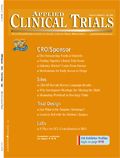A Case Study in eSubmissions
Insurty gets ready to meet FDA’s requirement that regulatory submissions be in eCTD format.
FDA's announcement in December 2007 that it would only accept electronic regulatory submissions in eCTD format starting January 1st was no cause for concern for Boehringer Ingelheim. That's because by then the Ingelheim, Germany-based pharmaceutical company could compile a compliant eCTD (electronic common technical document) submission.
The journey to compliance began in early 2007 when the pharmaceutical goliath—which operates in 47 countries and employs a little over 38,000 people—sized up its best options. Those included, it determined, outsourcing to a solution's provider with a track record of long-term stability and using software as a service (SaaS).

Drag and drop capabilities allow users to easily add study files to their U.S. eCTD, which can be turned into an EU submission in a few steps.
Image Solutions, Inc. (ISI; Whippany, NJ, and Eschborn, Germany), a company Boehringer Ingelheim worked with since 2003, met the selection criteria along with its eCTDXPress. The application from ISI creates, manages, and reviews eCTDs and comes in different configurations, including as a desktop solution and a SaaS enterprise solution.
"Software as a service was an attractive option for us to have a validated eCTD tool available within a short time without taking away resources from other ongoing and important projects in R&D and related to submissions," said Dr. Hanns-Georg Leimer, head of Boehringer Ingelheim's Global Document Management Solution Center. In the end, the option proved as good a fit as the software.
First, the company met its own eCTD-ready deadline of less than a year. Second, eCTDXpress easily integrated with their document management system, Documentum from EMC (Hopkinton, MA). Smooth software integration was no coincidence, as eCTDXPress is compatible with Documentum and other document management systems, like LiveLink from OpenText (Ontario, Canada).
Going the SaaS route also allowed Boehringer Ingelheim to cut internal support costs by 40%, according to Gilbert Kampfner, managing director of ISI Europe. "In comparison to buying normal software, you have a fairly low start-up cost," he told Applied Clinical Trials, "for every dollar you spend buying the software, you have to spend two on implementation and validation."
An additional benefit eCTDXPress as an SaaS solution provides Boehringer Ingelheim is freedom. As Kampfner explained, "SaaS puts the shoe on the other foot"—the vendor's foot. That means it is ISI's responsibility to upgrade the software (including when FDA updates the submission form), provide end user support, fix bugs, and install patches. This lets the pharma company focus its attention on what it does best: research and development.
Since first implementing ISI software five years ago (ISIToolBox, DocComposer, and CRFTrack), Boehringer Ingelheim estimates that it has shaved at least two weeks off the submissions process.—Kerri Nelen

Including Women of Childbearing Age in Clinical Research
March 26th 2024In recognition of International Women's Month, we're featuring this recent talk between Associate Editor Miranda Schmalfuhs and Marie Teil, Global Head of UCB’s Women of Childbearing Age Program. They speak about the specific challenges women with chronic illnesses face when accessing appropriate treatment and participating in clinical trials, UCB's Women of Childbearing Age Program and it’s most successful strategies, and much more.
Regulatory Compliance With eCOAs
April 26th 2024In the fourth and final part of this video interview with ACT editor Andy Studna, Melissa Mooney, director, eCOA sales engineering, IQVIA discusses how the regulatory stance on electronic clinical outcome assessments has changed over the years and what it could look like in the future.
Improving Engagement While Maintaining Data Integrity & Validity
March 19th 2024In recognition of Women's Health Month, we're featuring this recent talk between Associate Editor Miranda Schmalfuhs and uMotif's Chief Product Officer, Julia Lakeland, discuss new technologies improving patient engagement and reducing the emotional and logistical burdens of participation, ethical considerations that should be addressed when implementing those technologies, while ensuring patient privacy, and much more.
Using Patient Reported Outcomes in Dermatology Trials
April 25th 2024In part 3 of this video interview with ACT editor Andy Studna, Melissa Mooney, director, eCOA sales engineering, IQVIA sheds light on the unique challenges of dermatology trials and how clinical outcome assessments can be implemented in them.